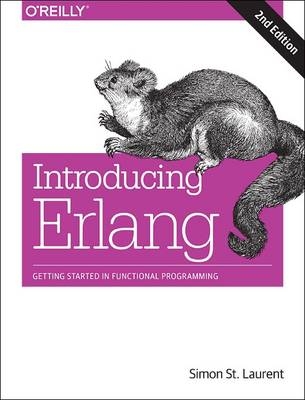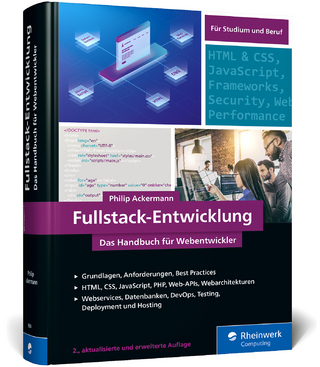
Introducing Erlang, 2e
Seiten
2017
O'Reilly Media (Verlag)
978-1-4919-7337-0 (ISBN)
O'Reilly Media (Verlag)
978-1-4919-7337-0 (ISBN)
In this updated second edition, author Simon St.Laurent shows you how to write simple Erlang programs by teaching you one skill at a time. By the end of your journey, you'll understand why Erlang is ideal for concurrency and resilience.
If you're new to Erlang, its functional style can seem difficult, but with help from this hands-on introduction, you'll scale the learning curve and discover how enjoyable, powerful, and fun this language can be. In this updated second edition, author Simon St.Laurent shows you how to write simple Erlang programs by teaching you one skill at a time. You'll learn about pattern matching, recursion, message passing, process-oriented programming, and establishing pathways for data rather than telling it where to go. By the end of your journey, you'll understand why Erlang is ideal for concurrency and resilience. Get cozy with Erlang's shell, its command line interface Define functions, using the fun tool, to represent repeated calculations Discover atoms, pattern matching, and guards: the foundations of your program structure Delve into the heart of Erlang processing with recursion, strings, lists, and higher-order functions Create processes, send messages among them, and apply pattern matching to incoming messages Store and manipulate structured data with Erlang Term Storage and the Mnesia database Learn about Open Telecom Platform, Erlang's open source libraries and tools
If you're new to Erlang, its functional style can seem difficult, but with help from this hands-on introduction, you'll scale the learning curve and discover how enjoyable, powerful, and fun this language can be. In this updated second edition, author Simon St.Laurent shows you how to write simple Erlang programs by teaching you one skill at a time. You'll learn about pattern matching, recursion, message passing, process-oriented programming, and establishing pathways for data rather than telling it where to go. By the end of your journey, you'll understand why Erlang is ideal for concurrency and resilience. Get cozy with Erlang's shell, its command line interface Define functions, using the fun tool, to represent repeated calculations Discover atoms, pattern matching, and guards: the foundations of your program structure Delve into the heart of Erlang processing with recursion, strings, lists, and higher-order functions Create processes, send messages among them, and apply pattern matching to incoming messages Store and manipulate structured data with Erlang Term Storage and the Mnesia database Learn about Open Telecom Platform, Erlang's open source libraries and tools
Simon St.Laurent is a Content Manager at LinkedIn Learning, focusing primarily on front-end web technologies. His interest is on the server side, and experience chairing the Open Source Convention (OSCON) made him think that Erlang approaches would be the future on the server. Simon has authored or co-authored several books, including Introducing Elixir, Learning Rails 3, and XML Pocket Reference, 3rd Edition.
| Erscheinungsdatum | 18.03.2017 |
|---|---|
| Verlagsort | Sebastopol |
| Sprache | englisch |
| Maße | 177 x 233 mm |
| Gewicht | 372 g |
| Themenwelt | Mathematik / Informatik ► Informatik ► Programmiersprachen / -werkzeuge |
| Mathematik / Informatik ► Informatik ► Software Entwicklung | |
| Mathematik / Informatik ► Informatik ► Theorie / Studium | |
| ISBN-10 | 1-4919-7337-4 / 1491973374 |
| ISBN-13 | 978-1-4919-7337-0 / 9781491973370 |
| Zustand | Neuware |
| Haben Sie eine Frage zum Produkt? |
Mehr entdecken
aus dem Bereich
aus dem Bereich
Das Handbuch für Webentwickler
Buch | Hardcover (2023)
Rheinwerk (Verlag)
49,90 €
Grundlagen und praktische Anwendungen von Transpondern, kontaktlosen …
Buch (2023)
Hanser (Verlag)
89,99 €


